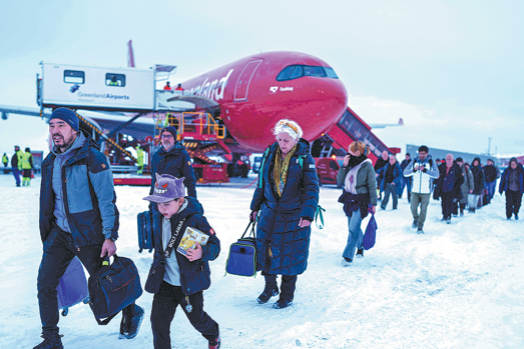City farms could boost future food security
By HUANG ZHILING and PENG CHAO in Chengdu | China Daily | Updated: 2024-09-09 09:40

Urban agriculture could play a key role in addressing challenges to global food security as the world population grows and urbanization increases, experts and officials said at a conference in Chengdu, Sichuan province, on Saturday.
"In times of demographic change, rapidly increasing repercussions of climate change and of complicated geopolitical tensions, the global food system that feeds us all is under threat from multiple directions," said Julian Lasinger, German deputy consul general in Chengdu, noting that new approaches in agriculture and food production are urgently needed.
He made the remarks while addressing the Sino-German Conference on Innovative Approaches for Agriculture and Food Systems held in the Sichuan capital.
Lasinger said both China and Germany are projected to have 80 percent of their population living in cities by 2050, but only 15 to 20 percent of their food is currently produced in urban areas, which could pose a significant challenge to food security for urban populations.
"The German Federal Government supports joint efforts of sustainable agricultural innovation, including in urban agriculture," he said, adding that an increasing amount of food could be sourced from urban areas in the future as technological innovation and research pilots continue to drive the development of urban agriculture.
In her report, German urban agriculture expert Katrin Bohn introduced the concept of the Continuous Productive Urban Landscape, which involves integrating urban agriculture into the design and planning process of cities to enhance urban sustainability.
Bohn said a food-productive urban landscape is environmentally productive, meaning that it brings significant environmental benefits, including reducing carbon dioxide emissions, preserving biodiversity, and improving air, soil and water quality.
Such a landscape is also socioeconomically productive, as it helps strengthen local identity, reduce the number of "food deserts", create green jobs, support local economies and provide ecosystem services, she added.
Bohn suggested integrating urban agriculture into existing and planned green infrastructure, supporting cities in setting up economically viable food system projects, and developing urban food strategies and policies in collaboration with stakeholders.
Yang Qichang, chief scientist at the Chinese Academy of Agricultural Sciences' Institute of Urban Agriculture, who presented the institute's vertical farming practices in his report, said that vertical farming is an important means of production to meet the rising urban food demand as it can produce more food with less land and fewer resources.
In vertical farming, crops are grown in stacked layers with a software system regulating temperature, humidity, carbon dioxide concentrations, fertilizer inputs, and LED lighting that replaces sunlight.
Yang said this cutting-edge agricultural technique has the potential to boost land-use efficiency to over 1,000 times that of open-field farming.
"A 30-story vertical farm building can produce 10,800 metric tons of vegetables annually, which can meet the vegetable needs of about 40,000 people," he said.
The conference, which marks the final highlight of a visit by a delegation from German agriculture research institutes to CAAS' institutes and experimental research stations, is an important exchange event in the third phase of the Sino-German Agricultural Centre's Science & Technology Platform, according to Eva Sternfeld, coordinator of the platform on the German side.
























